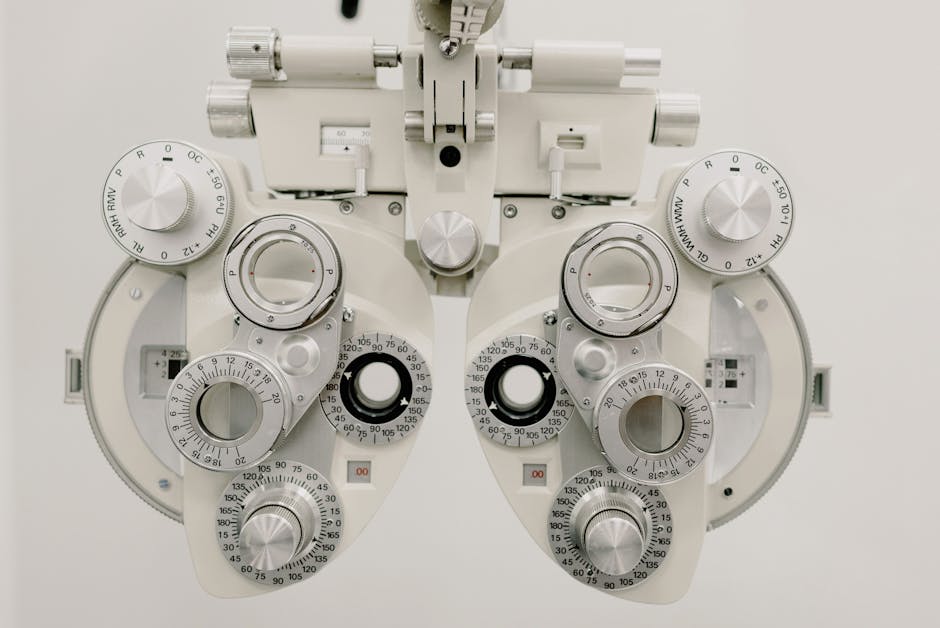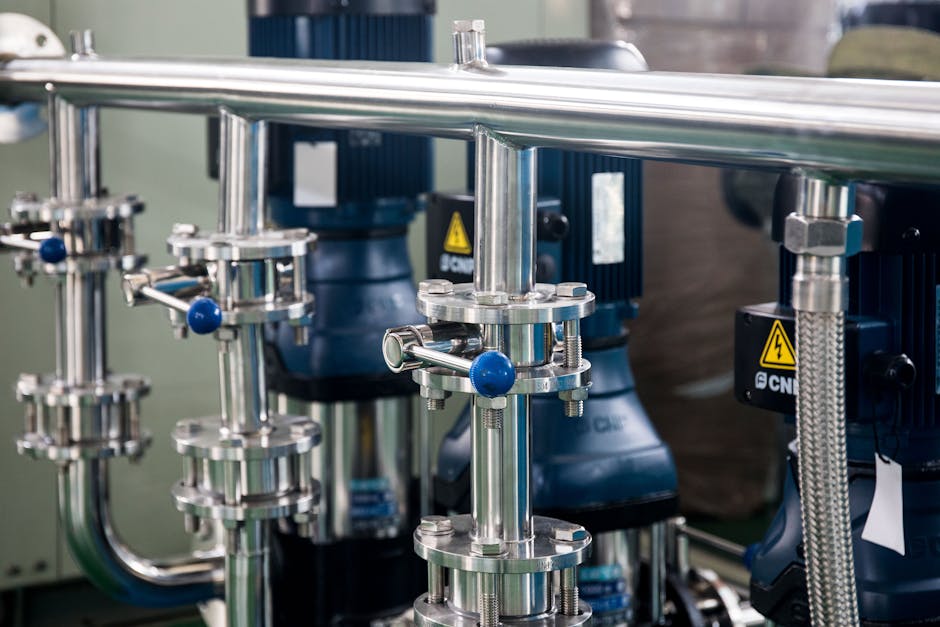Materials Testing and Quality Control: Ensuring Product Excellence in Manufacturing
When you manufacture a product, you’re not just building something – you’re making a promise to your customers that it will perform as expected, and that promise depends on the quality of your materials and the effectiveness of your quality control processes. Effective materials testing and quality control are essential to ensuring your products meet customer expectations, industry standards, and regulatory requirements. By understanding the importance of materials testing, developing clear quality control objectives, and implementing effective testing methods, you can identify and address defects early on, reducing waste, and preventing costly recalls. As you explore the world of materials testing and quality control, you’ll discover the secrets to producing high-quality products that meet and exceed customer expectations.
Key Takeaways
• Materials testing is crucial to validate the safety and reliability of final products and prevent material substitution or tampering.• Effective quality control involves setting clear quality metrics, conducting regular inspections, and testing products at various stages of production.• Early defect detection enables prompt correction, saving time, resources, and reputation, and prevents costly rework and product failures.• A quality control plan outlines procedures and protocols for defect detection and correction, and identifies key quality metrics to measure performance.• Implementing quality control measures reduces the risk of product recalls, reputational damage, and financial losses, ensuring only high-quality products reach the market.
The Importance of Materials Testing

When you’re building a bridge, constructing a high-rise, or manufacturing a medical device, you need to be sure that the materials you’re using can withstand the stresses and strains they’ll be subjected to, which is why materials testing is essential to validating the safety and reliability of your final product.
The authenticity of the materials you’re using is vital, as counterfeit or low-quality materials can compromise the integrity of your product. This is where material authenticity comes in – verifying the identity and composition of the materials used to confirm they meet the required specifications.
Supply chain risks, such as material substitution or tampering, can also have devastating consequences. Materials testing helps mitigate these risks by identifying potential weaknesses in the supply chain and confirming that only authentic, high-quality materials are used.
Understanding Quality Control Processes

As you explore the domain of quality control, you’ll need to establish clear objectives that aline with your organisation’s goals.
You’ll also need to select the most effective testing and inspection methods to guaranty the quality of your materials.
Quality Control Objectives
You need to establish clear quality control objectives to guaranty that your testing and inspection processes are focussed on achieving specific, measurable goals. These objectives serve as a roadmap for your quality control efforts, ensuring that your products meet customer expectations and industry standards.
To develop effective quality control objectives, consider the following key aspects:
| Quality Metrics | Customer Expectations | Target Values |
|---|---|---|
| Defect rate | Zero defects | < 1% |
| Product durability | 5-year warranty | 99.9% reliability |
| Performance consistency | Consistent results | ± 5% variation |
| Material quality | High-quality materials | 100% compliance |
| Certification compliance | Industry certifications | 100% compliance |
Testing and Inspection Methods
Implementing effective testing and inspection methods is essential to guaranty the reliability and quality of your products, as it allows you to identify and address any defects or inconsistencies early on in the manufacturing process.
By doing so, you can prevent costly rework, reduce waste, and improve overall efficiency.
To achieve this, you’ll need to develop a thorough testing strategy that incorporates various methods, including visual inspections, mechanical testing, and chemical analysis.
In today’s digital age, leveraging test automation can substantially streamline your testing process, reducing the likelihood of human error and increasing the speed of testing.
Additionally, adhering to digital standards, such as those outlined in industry-specific protocols, will help guaranty consistency and accuracy in your testing results.
Defect Identification Procedures
Effective defect identification procedures rely on a combination of visual examinations, measurement techniques, and analytical methods to detect and classify defects in materials and products. As you implement these procedures, you’ll be able to identify defects accurately and efficiently. This is essential in ensuring product excellence in manufacturing.
You’ll use visual examinations to identify surface defects, such as cracks, corrosion, or discolouration. Measurement techniques, like dimensional inspection and non-destructive testing, will help you detect internal defects or deviations from specifications.
Analytical methods, such as spectroscopy or chromatography, will provide detailed information on material composition and properties.
Once defects are detected, you’ll categorise them based on their type, severity, and impact on product performance. Defect categorisation is vital for prioritising corrective actions and allocating resources effectively.
Failure analysis, which involves identifying the root cause of defects, will help you address the underlying issues and implement corrective actions to prevent similar defects from occurring in the future.
Types of Materials Testing Methods

As you explore the world of materials testing, you’ll discover a plethora of methods designed to evaluate the properties and performance of various materials.
Numerous materials testing methods exist to evaluate the properties and performance of various materials, each serving a distinct purpose in the quality control process.
One essential method is Material Creep testing, which assesses a material’s ability to withstand continuous stress over an extended period. This test is essential for materials used in high-stress applications, such as aerospace or construction, where material failure can have catastrophic consequences.
Another important method is Dynamic Analysis, which involves applying cyclic loads to a material to simulate real-world conditions. This test helps engineers understand how materials respond to varying stress levels, allowing them to design more resilient structures and products.
Other testing methods include Tensile Testing, which evaluates a material’s strength and ductility, and Impact Testing, which assesses a material’s resistance to sudden impacts.
Additionally, Fatigue Testing simulates the effects of repeated loading and unloading on a material, while Corrosion Testing evaluates a material’s resistance to environmental degradation.
Each of these methods provides valuable insights into a material’s properties and performance, enabling manufacturers to make informed decisions about material selection, product design, and quality control.
In-House Vs Outsourced Testing

As you consider your materials testing strategy, you’re faced with a pivotal decision: whether to invest in in-house testing capabilities or outsource testing to a third-party laboratory.
Both options have their advantages, and it’s vital to weigh the benefits and drawbacks of each approach.
In-House Testing Capabilities
You have the option to perform materials testing in-house, where your organisation maintains its own testing facilities and personnel, allowing for greater control over the testing process and faster turnaround times.
This approach enables you to tailor your testing protocols to meet your specific product requirements and comply with industry standards.
When setting up an in-house testing facility, careful consideration must be given to laboratory design, guaranteeing that the layout and workflow optimise testing efficiency.
Moreover, proper equipment calibration is vital to prevent errors and guaranty accurate and reliable test results.
This involves regular maintenance, verification, and validation of testing equipment to prevent errors and maintain consistency.
Outsourcing Testing Benefits
While maintaining in-house testing capabilities offers control and flexibility, outsourcing materials testing to specialised laboratories can provide access to a broader range of testing capabilities, expertise, and resources.
You can tap into the latest technologies and methods, which might be too expensive or impractical to implement in-house. By outsourcing testing, you can:
Reduce capital expenditures on equipment and maintenanceLeverage the expertise of specialised technicians and engineersAccess a wider range of testing capabilities, including those that may be too specialised or niche for in-house testing
Outsourcing testing can also lead to cost savings and time efficiency.
You won’t have to worry about equipment calibration, maintenance, and upgrades, which can be time-consuming and costly.
Additionally, outsourcing testing can help you accelerate your product development cycle, as you can rely on the expertise of specialised laboratories to provide timely and accurate results.
Role of Quality Control in Manufacturing

In manufacturing, quality control plays a pivotal role in ensuring that products meet specific standards, regulations, and customer expectations. As a manufacturer, you understand the importance of delivering high-quality products to maintain customer trust and loyalty.
Quality control is an integral part of the production process, ensuring that every unit meets the required quality metrics.
In today’s complex supply chain, quality control is more critical than ever. With multiple stakeholders involved, having a robust quality control system in place is crucial to prevent defects, reduce waste, and improve overall efficiency.
By implementing quality control measures, you can identify and rectify issues early on, reducing the risk of product recalls, reputational damage, and financial losses.
Effective quality control involves setting clear quality metrics, conducting regular inspections, and testing products at various stages of production.
This enables you to identify and address any deviations from the required standards, ensuring that only high-quality products reach the market.
Preventing Defects and Failures

By implementing proactive defect prevention strategies, manufacturers can substantially reduce the likelihood of product failures and defects, thereby minimising the risk of costly recalls, reputational damage, and financial losses.
As a manufacturer, you understand the importance of producing high-quality products that meet customer expectations. To achieve this, you need to identify and address potential defects and failures in your products.
Conducting Defect Analysis is essential in identifying the root cause of defects and failures. This involves analysing the product’s design, materials, and manufacturing process to identify areas of improvement.
By doing so, you can identify potential Failure Modes, which are the ways in which a product can fail to perform its intended function.
Some common Failure Modes include:
-
Material failure: Failure of a material to perform its intended function due to defects or degradation.
-
Design flaws: Inadequacies in the product’s design that can lead to failure.
-
Manufacturing errors: Errors during the manufacturing process that can result in product defects.
Advantages of Early Defect Detection

Detecting defects early on in the production process enables you to correct issues promptly, saving time, resources, and reputation. By catching defects early, you can prevent costly rework, reduce waste, and guaranty that your products meet the required quality standards. This early warning system allows you to identify and address problems before they escalate, reducing the risk of product failures and recalls.
| Benefit | Description | Impact |
|---|---|---|
| Cost Savings | Reduce waste and rework by identifying defects early | Reduced production costs |
| Improved Quality | Guaranty products meet required quality standards | Enhanced customer satisfaction |
| Reduced Downtime | Minimise production downtime due to defects | Increased productivity |
| Enhanced Reputation | Prevent costly recalls and product failures | Protected brand reputation |
| Increased Efficiency | Streamline production process with early defect detection | Improved production efficiency |
Implementing a Quality Control Plan

To guaranty the effectiveness of your quality control process, you’ll need to develop and implement a thorough quality control plan that outlines the procedures and protocols for defect detection and correction.
This plan should identify key quality metrics that will be used to measure the performance of your quality control process. These metrics may include defect rates, yield rates, and customer satisfaction ratings.
A good quality control plan will also outline the roles and responsibilities of each team member involved in the quality control process.
This will help confirm that everyone knows what’s expected of them and can work together to achieve the desired quality standards.
When developing your quality control plan, consider the following key factors:
-
Supply chain management: Verify that your suppliers are adhering to the same quality standards as your organisation.
-
Training and certification: Provide ongoing training and certification programmes for your quality control team to confirm they’ve the necessary skills and knowledge.
-
Continuous monitoring and improvement: Regularly review and update your quality control plan to confirm it remains effective and efficient.
Effective Testing and Inspection Tools

Effective testing and inspection are essential in ensuring the excellence of your manufactured goods. To achieve this, you’ll need to employ a range of tools that cater to your specific production needs.
Automation strategies can greatly enhance your testing and inspection processes. By integrating automated systems, you can reduce human error, increase efficiency, and streamline your quality control procedures. For instance, automated vision systems can inspect products at high speeds, detecting even the slightest defects. Similarly, automated testing equipment can perform repetitive tests with precision and accuracy, freeing up your staff to focus on more complex tasks.
Calibration essentials are also imperative in ensuring the accuracy of your testing and inspection tools. Regular calibration of your equipment guarantees that your measurements are reliable and consistent. This is particularly important in industries where precision is paramount, such as aerospace or pharmaceutical manufacturing. By maintaining calibrated equipment, you can trust the results of your tests and inspections, making informed decisions about your products.
Maintaining Regulatory Compliance

As you navigate the complex landscape of materials testing and quality control, you must verify that your processes and procedures aline with relevant regulatory requirements.
You’re responsible for staying up-to-date on compliance requirements, which can vary depending on your industry, location, and the type of materials you’re working with.
Failure to comply can result in costly penalties, reputational damage, and even legal action, making regulatory body oversight a critical aspect of your quality control strategy.
Compliance Requirements
By implementing a robust quality control process, you guaranty that your materials meet the necessary regulatory standards, thereby maintaining compliance with relevant laws and regulations. This is critical in verifying that your products meet the required specifications, reducing the risk of costly recalls, and protecting your brand reputation.
To maintain compliance, you need to establish a thorough compliance framework that outlines the necessary protocols and procedures.
- Developing auditing protocols to identify potential compliance gaps
- Implementing compliance frameworks that aline with industry standards
- Conducting regular internal audits to confirm adherence to regulatory requirements
Regulatory Body Oversight
You must guaranty ongoing compliance with regulatory requirements by maintaining open communication channels with regulatory bodies and submitting to regular inspections and audits. This ensures that your manufacturing process adheres to the highest standards, avoiding costly penalties and reputational damage.
Regulatory body oversight is crucial in maintaining Agency Accountability. It involves implementing Enforcement Strategies to ensure compliance with regulations. This includes:
| Regulatory Body | Oversight Activities | Frequency || FDA (Food and Drug Administration) | Inspections, audits, and product testing | Quarterly || OSHA (Occupational Safety and Health Administration) | Workplace inspections and hazard assessments | Semi-annually || EPA (Environmental Protection Agency) | Environmental impact assessments and compliance audits | Annually |
Conclusion
By prioritising materials testing and quality control, you’re not just ensuring product excellence, you’re building trust with your customers.
Remember, ‘an ounce of prevention is worth a pound of cure.’ By catching defects early, you’re saving time, resources, and your reputation.
By implementing a quality control plan, you’re guaranteeing a superior product that meets industry standards.
Don’t wait until it’s too late, make quality control a top priority in your manufacturing process.
Contact us to discuss our services now!
